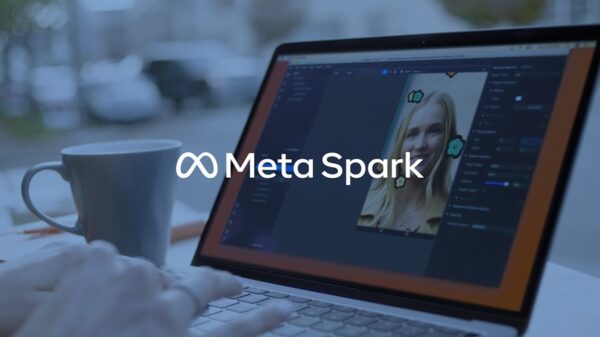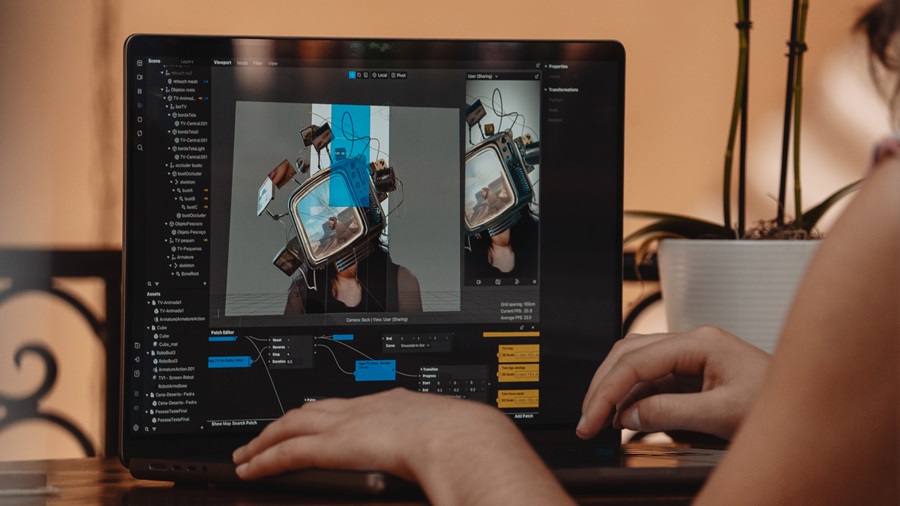
In Augmented Reality News
August 27, 2024 – Meta has this week announced its decision to shut down its Meta Spark platform of third-party tools for augmented reality (AR) content creation, as well as content created on the platform.
Starting January 14, 2025, any augmented reality effects built by third parties will no longer be available. The move marks a significant change in Meta’s strategy, with the company stating that it is “shifting resources to the next generation of experiences, across new form factors like glasses.”
What is Meta Spark?
Meta Spark, which has been a valuable tool for third-party AR creators and brands since its launch in 2017, has enabled the creation and distribution of AR effects that have been used billions of times across Meta’s Family of Apps.
The closure of Meta Spark means that third-party AR effects created by brands and independent creators will be removed from Meta’s platforms, including Instagram, Facebook, and Messenger. While AR effects owned by Meta will remain available, all tools and services related to Meta Spark—such as Meta Spark Studio, Meta Spark Player, and Meta Spark Hub—will also cease operations on the same date.

Why is Meta shutting down its Spark platform?
Meta noted that the decision was made following a “thorough assessment,” and is part of a larger effort to prioritize the products that the company believes will best serve the future needs of its consumers and business customers.
Who will be affected once Meta Spark shuts down?
The shutdown will impact a wide range of stakeholders, particularly the community of AR creators and agencies that have built businesses around the Meta Spark platform. However, all users of any AR effects across Meta’s ecosystem of apps will also be affected, with access to these experiences, filters and effects being removed in January.
For many creators, the platform has been instrumental in reaching millions of users with interactive and immersive AR content. Brands that have integrated AR effects into their marketing campaigns will also be affected, especially those with ongoing or planned projects that extend beyond the platform’s shutdown date. However, with no plans from Meta to continue any aspect of the Spark platform after the January 14 date, companies and creators may need to find alternative platforms or strategies to maintain their AR presence.
Until that date, creators have been encouraged to save any project files, assets, and demo videos that they wish to keep before the platform goes offline. The company has committed to maintaining the platform up until the shutdown date, ensuring that users can continue to publish and manage their AR effects in the interim, although whether creators or brands will choose to do this following this week’s announcement is yet to be seen, with several creators and platform users already voicing their concerns and frustrations.
Other reasons why might Meta be discontinuing Meta Spark
With the company’s annual Meta Connect conference set to take place next month from September 25-26, there is a possibility that Meta may unveil a new platform or tools for creators and brands that could replace or expand upon the capabilities of Meta Spark, and may potentially be aimed at developing content for AR glasses.
As seen with the Apple Vision Pro, one key issue the device encountered at its launch was that there simply wasn’t enough content available for the headset (and perhaps still isn’t) for many to justify buying it. Although the device was never really intended to be a consumer product in the first place, this lack of content and experiences still left some skeptical as to Vision Pro’s initial appeal and usefulness.
However, with Meta already in the smart glasses market through its Ray-Ban collaboration, expectation is high for what the company will introduce as its first consumer AR device that features a display (something that the Ray-Ban Meta smart glasses do not include).

With its push towards making AR smart glasses a more widely adopted form factor for consumers, the company is nearing the point where it will start showing the prototype version of its full holographic glasses, with Meta CEO Mark Zuckerberg noting in a recent interview that every person he has shown this prototype to so far has had a “giddy” reaction to it.
The discontinuation of Meta Spark could therefore be part of a wider strategy to launch a new platform for creators that includes AR glasses compatibility from the outset. This could mean that any subsequent creations or experiences built using a new platform would potentially be available on a new holographic AR smart glasses product at its launch.
Until then, several creators and brands remain in limbo, as they won’t know what to expect until more information comes out at Meta Connect next month.
For more information on Meta Spark and details on the upcoming changes, please visit Meta’s website.
Image credit: Meta
About the author
Sam is the Founder and Managing Editor of Auganix. With a background in research and report writing, he has been covering XR industry news for the past seven years.




